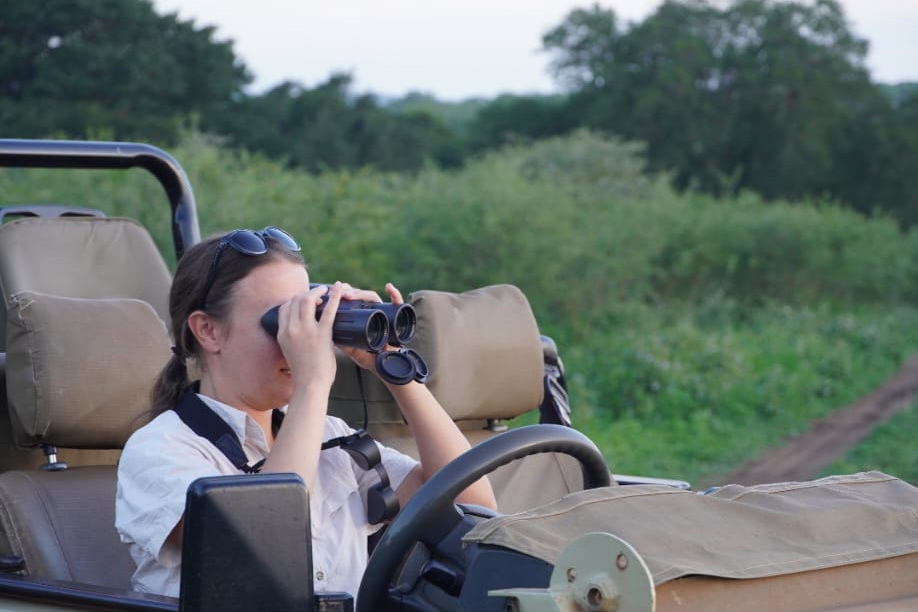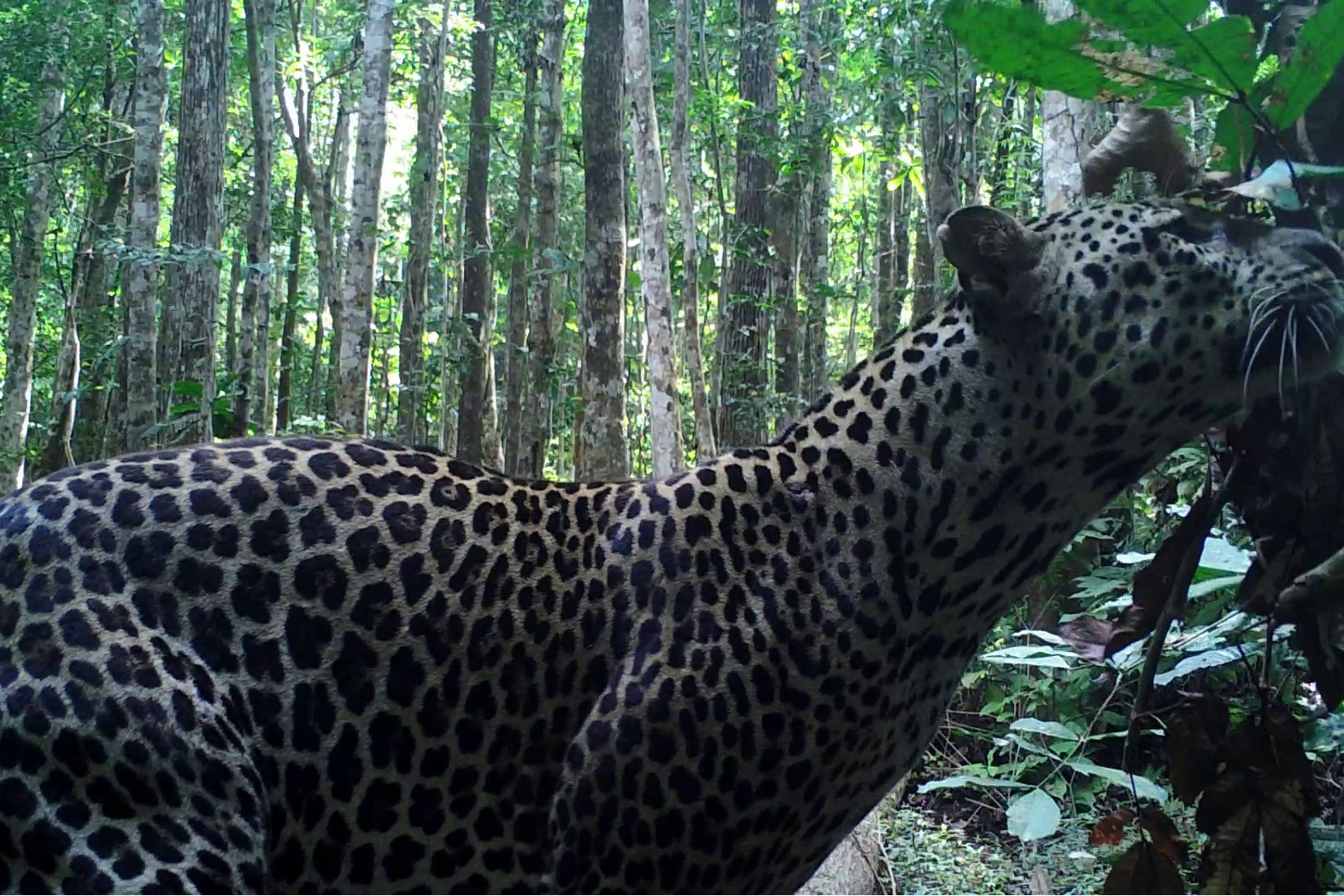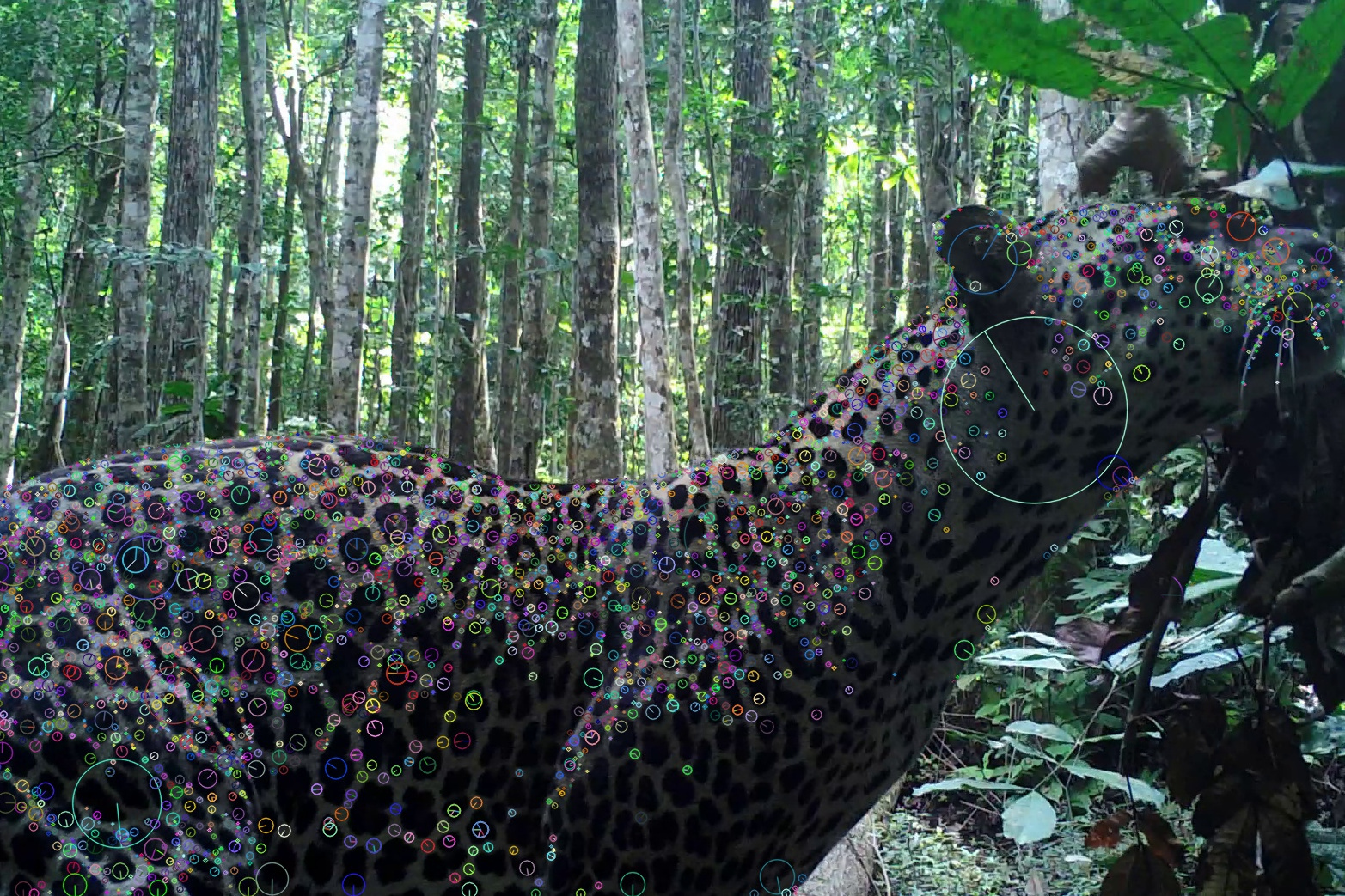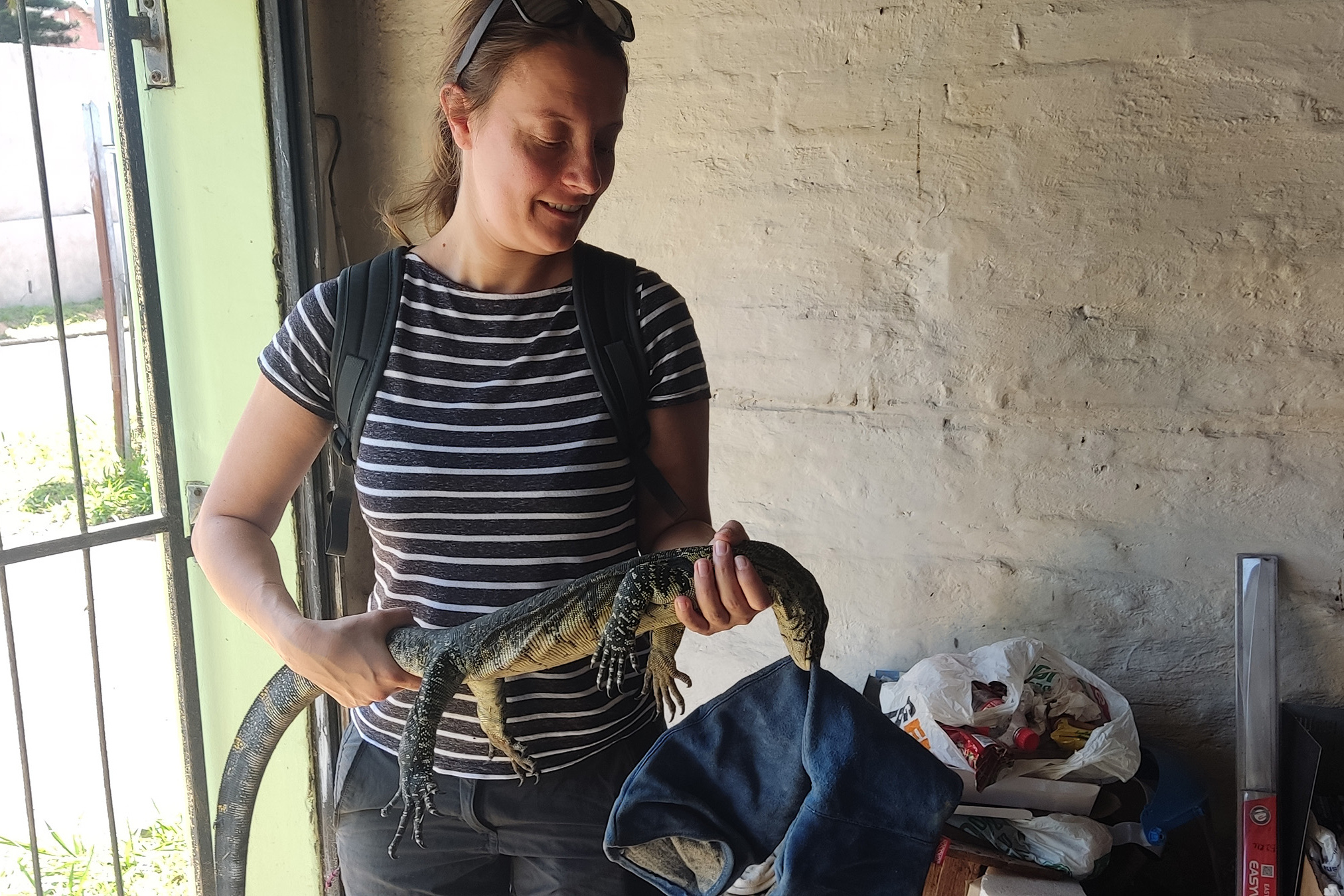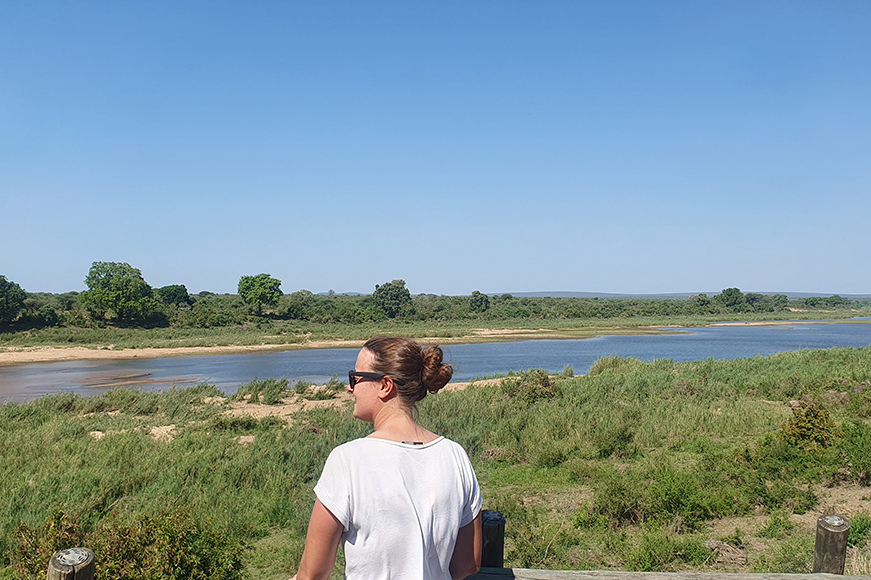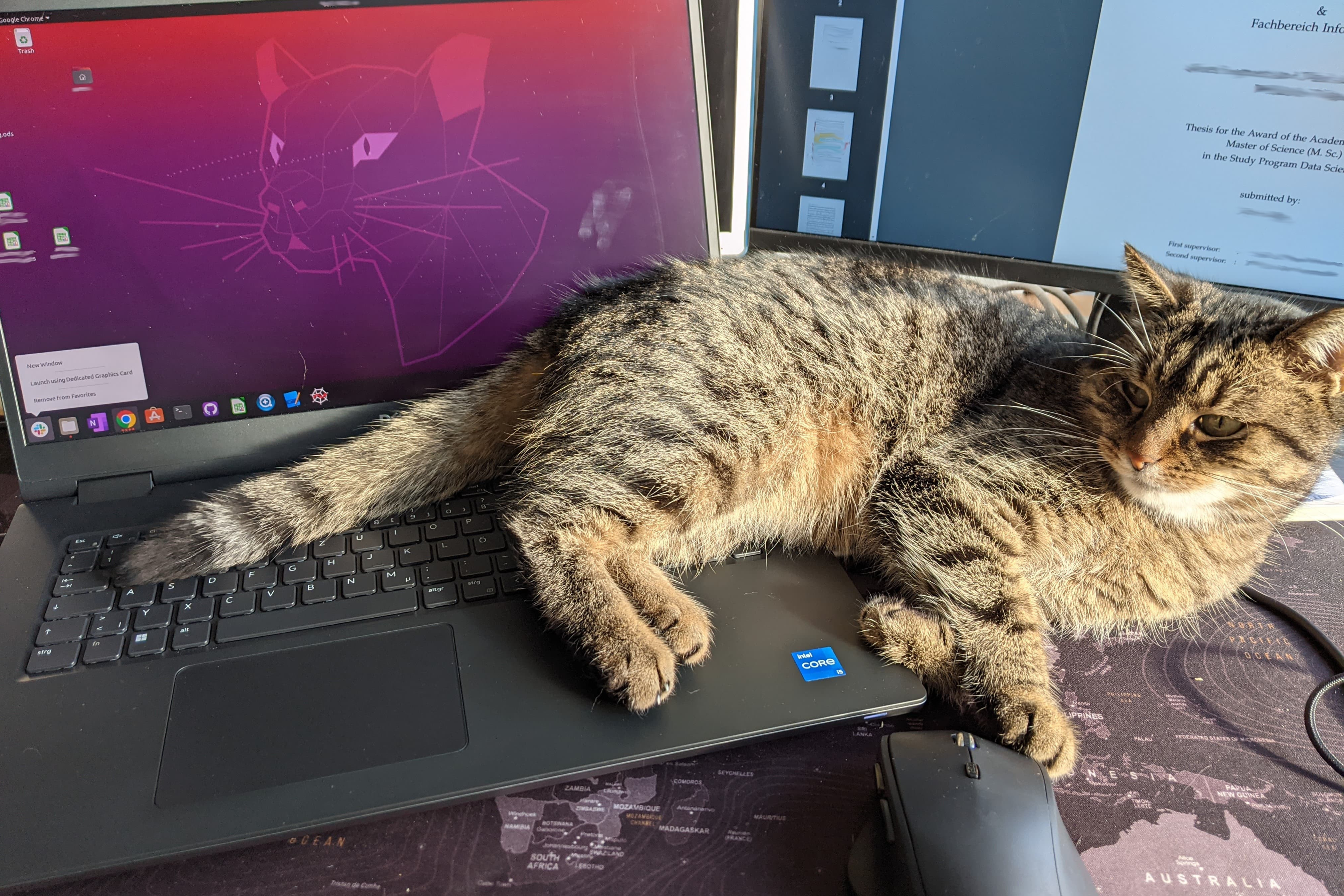AI for Animal Protection in South Africa

To collect wildlife data, Vanessa Süßle, a doctoral researcher in computer science at h_da, travelled around South Africa for three months with a team of biologists: vast numbers of photos from camera traps, recordings of bird calls and information from transmitters attached to fish. Within her doctoral project, she is exploring how to automate and accelerate the analysis of such “mountains of data” – a task which until now has been very time-consuming – with the help of artificial intelligence. This would make it possible, for example, to determine songbird population more efficiently instead of extrapolating it on the basis of a manual evaluation, as has been the case to date. A particular challenge here is to filter and classify millions of photos and audio recordings. Or to survive 300 tick bites at once.
By Alexandra Welsch, 29.10.2024
If Fibi hadn’t disappeared, things would probably never have turned out this way. “My cat had run away.” This is how computer scientist Vanessa Süßle, 31, begins her story of how she arrived at her doctoral project. Considering that she mostly deals with data, this is quite astonishing, but it was the starting point where an idea developed. To catch Fibi, Süßle bought a “camera trap”. While searching the internet for an animal observation camera triggered by a sensor, she discovered that such cameras play a key role in wildlife research. And generate millions of images – a must-have for an expert in data science and computer vision.
Adopting an interdisciplinary approach, Süßle is exploring how to automate and accelerate the analysis of wildlife data with the help of artificial intelligence. “I wanted to do something practical that would make an impact,” she explains. She already worked with wildlife data for her Master’s thesis and ensured that the topic became established at the Faculty of Computer Science. When she started to occupy herself with animal photos from camera traps, she realised the following: although AI models already existed that were intended to make it easier for biologists to evaluate animal data, “there are few user-friendly applications suitable for real-world data,” she says.
Collaboration with zoology professor in South Africa
The nature-loving scientist, who hails from Mörfelden-Walldorf, tackled the question of fieldwork head-on and threw herself into the wonders of wildlife. Via internet research and a former colleague, she came into contact with Colleen Downs, Professor of Zoology and Research Chair in Ecosystem Health and Biodiversity at the University of KwaZulu-Natal in South Africa, who is co-supervising her doctoral thesis alongside two professors at h_da, Elke Hergenröther, Professor for Graphical Data Processing and Fundamentals of Computer Science, and Andreas Weinmann, Professor of Mathematics. At the end of 2023, the young data scientist spent three months in South Africa to “get a whiff” of biological field research on site. “It helps a lot with your basic understanding of the topic if you’ve been involved yourself,” says Süßle, explaining her thinking. “You then have a completely different connection to it.”
You can hear from her vivid tales of her experiences in South Africa just how much the trip for her as a computer scientist broadened her horizons. “I caught lizards with my hands, ringed birds and monitored nests,” she says, beginning to list all the things she did. “I helped to survey a river, and on one occasion we even had to hide from elephants and buffalo.” But that was nothing compared to the 300 or so tick bites she succumbed to at some point, probably via her waders. She has now got over the flu-like bug they triggered, she assures us with a casual wave of the hand. And stresses how invaluable the time in South Africa was for her. Not just because she made many friends. “I learnt how much work it is to collect animal data. And it’s not something you can do with AI.”
“If you were to listen to all of it, it would take you nine years”
AI can, however, help to analyse all the data. Vanessa Süßle is currently exploring how this can be done so that it meets biologists’ requirements as closely as possible. Vast quantities of animal data from camera traps, transmitters attached to fish and audio recordings of birds form this basis for this work. The bird sounds alone amount to a data volume of six terabytes. “Researchers recorded them around the clock for a year at nine locations,” Süßle explains. “If you were to listen to all of it, it would take you nine years.” The AI from Süßle’s training lab, on the other hand, should be able to automatically classify and analyse bird sounds according to parameters such as bird species or the location and time of the “sound event”. In this way, it might be possible in the future to determine the songbird population in a specific area with a very high degree of accuracy. Until now, this has mostly been done by extrapolating recording data evaluated manually.
For automated analysis, Süßle uses existing AI models and retrains them using the animal data available. This forms the basis for programming her own models. In keeping with the animal theme, she uses the Python programming language. “Wildlife data indeed look very, very wild,” she says, describing one of the main challenges, “and call for extensive data cleansing.” Some images are blurred because the animal moved, or it is obscured by a bush, or unrecognisable due to poor lighting conditions. There are also often false triggers, which is why the aim was to filter out photos without animals from the 200,000 or so from the camera traps. “Biologists still spend a lot of time clicking through images,” notes Süßle. She wants to give them tools that automate individual work steps, such as sieving out all photos in which an animal is only half visible. “We work with data pipelines,” she explains. “The data enter the pipeline upstream, and the results come out downstream.” Süßle used computer vision methods, such as computer-aided object recognition, after which 40,000 of the original 200,000 images remained.
The wildlife data are also very popular in teaching
That Vanessa Süßle works with such a wide variety of animal data in her research is a conscious decision. “We have taken a very broad approach to it.” Firstly, because no one else at the university has worked on it yet. “Secondly, it makes it easier for other people interested in the topic to come on board.” Some students have already written their Bachelor’s and Master’s theses on the subject. In addition, the doctoral researcher and her professor have already held an advanced seminar twice on “AI in Environmental, Nature and Species Conservation”. “The students really enjoyed it,” says Süßle, delighted about the impact that her work has on teaching, too. “It’s easy to get students interested in animal pictures.”
As far as Fibi is concerned, however, it was to no avail. Three months after her disappearance, Vanessa Süßle dismantled the camera trap outside her house without having achieved the desired result. Fibi turned up again after three years. “Now she’s more affectionate than ever,” remarks Süßle with a smile. What she has been up to in the meantime is Fibi’s secret. The mysteries of the animal kingdom will always remain unsolved – with or without AI.
Contact the science editorial team
Christina Janssen
Science Editor
University Communication
Tel.: +49.6151.533-60112
Email: christina.janssen@h-da.de
Translation: Sharon Oranski
